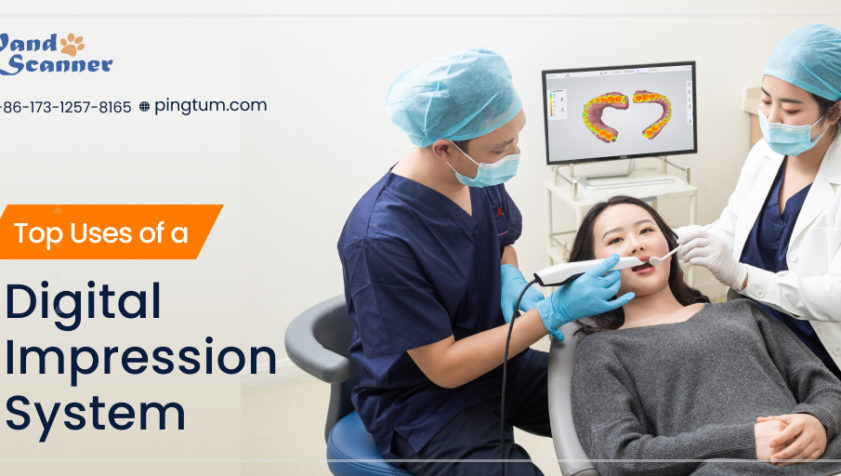Digital equipment has become the mainstay of diagnosis and treatment in the field of medicine, including dentistry. A digital impression system, such as a dental scanner facilitates the diagnosis and treatment of dental issues related to crooked, broken, or missing teeth. It also allows the dentist to check the condition of teeth worn out by cavities or dental infection/absecess. The best part of any dental scanner, namely, a China intraoral scanner, is to display the 3D model of the buccal cavity on a chairside monitor. It is done when a dentist inserts the scanner probe into the patient’s mouth or buccal cavity to study the condition of his or her teeth and gums.
The probe emits a light that falls on the affected area to capture images, which are subsequently processed by the CAD system to generate a 3D model of the buccal cavity. The model is displayed on the monitor to be seen by both the dentist and the patient. The accuracy of the 3D model is certainly a few notches higher than what can be obtained using the traditional method. Let us understand how a digital impression system like a Panda P2 intraoral scanner has usage in dentistry.

Multiple uses of a dental scanner
A dental scanner, such as a Panda P2 intraoral scanner, arguably the smallest IO scanner in the world, can be used for multiple purposes.
# To design bridges, crowns, and implants: The design of dental prosthetic appliances, namely, bridges, crowns, dentures, and implants remains one of the prominent applications of a dental scanner. The device can create a 3D model of a patient’s buccal cavity in real-time, which can then be studied by the dentist to arrive at an accurate diagnosis. The accurate dimensions captured by the scanner can help dentists or lab technicians to create the best-fit dental prosthetics for patients. For implants, the scanned images can guide the dental surgeon to the exact location inside the buccal cavity thereby saving time and enhancing the success of the procedure.
# To correct alignments: Once the digital 3D model is visible on the screen, the dentist can find out the areas where corrections are needed, and make suitable changes to address any alignment issues.
# Customization of oral healthcare items: Scanners like the China intraoral scanner can be used to customize oral healthcare items like toothbrushes. This way, the best-fit items can be created delivering comfort to the patients.
# Plan for surgery: Putting an implant in the exact area in the mouth can be a challenge and often a case of shooting in the dark a la traditional scanning. However, with devices such as the Panda P2 intraoral scanner, the dentist can clearly view the area of surgery, identify any problem, and perform the job with precision and speed. Importantly, the scanning device can be used to reduce any surgical risks as well.
# Education and training: A digital 3D model of the buccal cavity is better to understand than a 2D image taken by a conventional X-ray. The scanner can help wannabe dentists to better understand the anatomy of the teeth and gums. It can also be used to educate a patient about the treatment procedure to be followed thereby instilling trust.
Conclusion
In addition to the above-mentioned list of usage, the dental scanner system can store the patient’s data to be accessed easily. The multifarious usage has made the digital impression system a sought-after device for dentists and other stakeholders.






